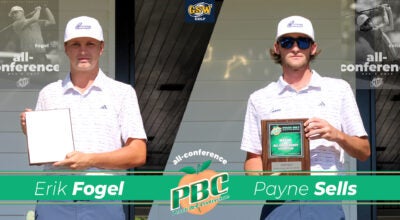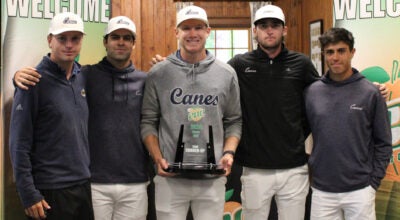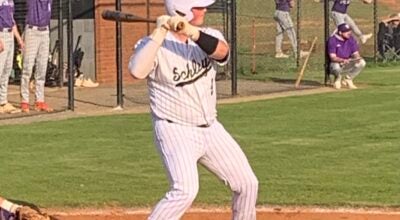Loran Smith’s Sports Column: Masters for Wednesday
Published 3:08 pm Tuesday, April 4, 2023
|
Getting your Trinity Audio player ready...
|
AUGUSTA – This is my 63rd Masters, and I am as excited as ever to
become immersed in the most exhilarating and intoxicating environments
there is in sports.
I consider the Masters and the Kentucky Derby the two classiest
events in sports. Wimbledon would obviously get strong consideration,
perhaps bringing about a “Big Three.” The Henley Regatta is especial but
attracts limited interest when compared with the aforementioned.
All major golf tournaments and the Grand Slam tennis championships
have something signature and special such as the French Tennis Open at
Roland Garros—Paris in the springtime is hard to beat. The British Open,
golf’s oldest championship, has more traditions than the Christmas season.
(You get a rush from the roar of the engines at Indianapolis; the
exhilarating, high moments of a Super Bowl or a World Series pique the
emotions and so does the running of the bulls at Pamplona—but you don’t
associate class with those sports. They can be spectacular, however.)
The Masters is something one simply can’t get enough of. Give this
championship temperatures which are balmy, perhaps breezy enough for a
cardigan but sunshine without thunder and electricity, and that makes the
day of 40,000 (my guess) golfing aficionados who swoon to every shot for
four rounds with the hope that the Sunday finale is what it always seems to
be—an unforgettable conclusion that makes you testify that the last
Masters the best ever.
It was Ken Venturi, who experienced hard luck at the Masters, that
said the “Masters begins on the back nine on Sunday.”
Venturi could have become the first amateur to win the Masters in
1956 except for a final round 80, losing by one stroke to Jackie Burke who
scored a 71 in blustery conditions.
Then in 1960, Venturi became the fabled “leader in the club house”
with a final round 70 only to see Arnold Palmer birdie the final two holes to
win his second Green Jacket. Arnie would go on to win two more Masters
titles and enjoyed a streak of victories or close finishes that made him the
dominant player at Augusta for about eight years. Friends said that Venturi
became embittered about his Masters’ experience but would later enjoy
highly regarded status in the television booth.
The lower clubhouse is where all players hung out for years. The
porch of the main clubhouse, overlooking the putting green, is where the
ole timers such as Sam Snead, Gene Sarazen, and Byron Nelson often
took respite. If you were an eager journalist, you didn’t have to ask
questions. All you had to do was listen.
However, Sarazen, at some point, would be asked about his famous
double eagle at the 15 th hole in 1935. He was always amendable to
conversation about his feat, noting that there were “23 people” standing
around the green. His playing partner was Walter Hagen and one of those
“twenty-three” was tournament founder, Bob Jones. “I had two great
witnesses,” Sarazen would grin.
I have on audio tape or Sarazen’s recall, in great detail, of the double
eagle and his views on the Masters and the tournament’s influence in golf.
He later said that over his lifetime, he had met at least a thousand or more
golf fans who claimed to have seen his miraculous four wood stroke which
became known as the “shot heard round the world.”
There were conversations with Jack Nicklaus, Byron Nelson, Arnold
Palmer, and Sam Snead and a phone conversation with Ben Hogan on the
phone, which regrettably was not recorded.
Snead was as colorful as they come. He sounded forth with
whatever was on his mind. It was fun to listen to him talk, his West Virginia
drawl as intriguing as his insightful commentary.
Snead gave Bob Jones and Cliff Roberts high marks with regard to
how they ran the Masters; he was very respectful of the golf course. He
thought the 12 th was one of the toughest in golf. “…it takes its toll. It eats
their lunch and the bag it came in. I told my nephew (J. C. Snead) there
are two holes that will kill you, No. 12 and No. 17. No. 17 looks closer than
it is because of the swells you don’t see. I said, just play the yardage.
Don’t go by the way it looks.
“With No. 12, you must play it long. If you miss the green, miss it in
the back, not the front.”
There was a brief period when Palmer was a host of the Sunday post
conference telecast. One year, when he had missed the cut and there was
that lull as the players were about to make the turn in the final round, we
sat in the locker room and talked about the tournament which he loved.
As always, it was an insightful conversation. He always had
something discerning to say. However, it was at Bay Hill one winter day
when I interviewed him for an hour that is most memorable. The one
question I gave priority to was, this one: “Do you have any idea how many
times you have signed your name in your lifetime?”
He smiled and said, “Well not sure, but my long-time secretary who
retied a couple of years ago estimated that I had signed my name
4,000,000 times.” That didn’t include banquets, golf courses, FBO’s and
restaurants.
Arnie was golf’s greatest ambassador.





